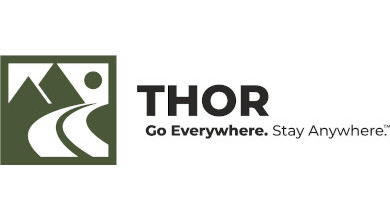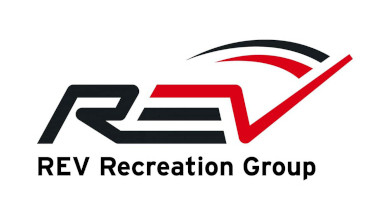THOR Posts Strongest Fiscal Q2 on Record

THOR Industries has reported net sales for the fiscal second quarter of $2.73 billion, an increase of 36 percent compared with the year-ago quarter. That includes $1.95 billion in North American RV net sales and $733.5 million in European RV net sales.

“In our quarter ended Jan. 31, we delivered record results for a fiscal second quarter, which is typically our lowest sales quarter. We generated sizeable growth in the key metrics of net sales, gross margin and earnings per share. Demand for our products continued to be extremely strong, as evidenced by the increase in our backlog, which set a record of $10.81 billion as of Jan. 31, 2021,” said Bob Martin, president and CEO of THOR Industries.
“We are aggressively working to meet this demand by selectively and strategically expanding production capacity at numerous plants by reconfiguring them or adding additional production lines and the requisite inventory while managing through temporary supply chain limitations. In addition, we have increased production levels across the vast majority of our plants. We are focused on balancing volume with quality output and being mindful not to over expand our production capabilities,” added Martin.
This year’s second quarter net sales include $1.37 billion for the North American Towable RV segment and $577.0 million for the North American Motorized RV segment.
Net income attributable to THOR in the quarter was $132.5, compared to $28.7 million in the prior-year period.
During the quarter, THOR acquired the Tiffin Group, comprised of Tiffin Motorhomes, Vanleigh RV and a number of related supply entities for approximately $300 million. During this period the Tiffin Group recorded net sales of $82.4 million.
North American Towable RVs net sales were $1.37 billion for the second quarter of fiscal 2021, an increase of 40 percent compared to Q2 sales a year ago. The company said the increase was driven primarily by a 36 percent increase in unit shipments.
North American Motorized RV net sales were $577 million for the second quarter of fiscal 2021, an increase of 68 percent compared to second-quarter net sales last year. The company said the increase was driven primarily by a 47 percent increase in unit shipments and a 21 percent increase in the overall net price per unit due to the impact of changes in product mix and price, primarily due to the addition of the higher-priced Tiffin Group product lines, and selective net price increases.7 Of the increase in total motorized RV net sales, $75 million was due to the acquisition of the Tiffin Group.
North American Motorized RV backlog increased by $2.13 billion, or 272 percent, compared to $784.4 million as of Jan. 31, 2020.
“Throughout the quarter we continued to focus first on the health of our employees,” said Martin. “We continue to maintain robust COVID-19 protocols and will continue to do so for as long as necessary for the benefit of our employees, their families and the communities in which we work and live. Our management teams throughout the THOR organization continue to do an amazing job of managing safety protocols while increasing production volumes needed to meet dealer demand for our family of products and working through ongoing supply chain constraints. Our record financial results are a direct outcome of the efforts of our global team members, and I am proud of what the team accomplished during the first half of the fiscal year for THOR. …
“Our outlook for the remainder of our fiscal year is for continued strength in the RV industry, but we still must manage through temporary supply chain issues which may limit the level to which we can increase output in the near term. We experienced delays in chassis deliveries and other supply chain constraints from our European suppliers during the first half of our fiscal year primarily due to pandemic-related challenges, and we anticipate these challenges will continue for the next few quarters. Within North America, we also continue to experience supply constraints and shortages of various RV component parts due to pandemic-related challenges, and the recent harsh weather conditions in the southern United States which has impacted the availability of certain petroleum-based components. We anticipate these supply chain challenges will continue to impact us in the near term and are cautiously optimistic that these constraints will lessen in the back half of calendar 2021.
“In calendar 2022, we expect to transition from shipping product to meet immediate end customer demand to a dealer restocking cycle. During this stage, we expect to be shipping product that will rebuild dealer inventories to more historically normal levels. Many dealers in both North America and Europe are currently significantly below historical inventory levels in relation to historical demand, so we expect this restocking cycle will take a number of quarters to complete, given that we still anticipate strong end customer demand in calendar 2022. In the longer-term, which we define as late calendar 2022 and beyond, we expect to get back to a more normal ordering cycle where dealers order to replenish sold stock.
“The tangible evidence supporting our outlook and the continued expansion of the industry beyond the pandemic include a number of items. First, Millennials, a market bigger than the baby boomers, are buying RVs earlier than previous generations. Historically, consumers that enjoy the RV lifestyle trade in, and often up, every three to five years. Next, work from home means work from anywhere, including in your RV. We are seeing the pandemic work-at-home trend turning into a lifestyle choice as more and more people choose RVs as their mobile office.
“Ongoing dealer consolidation also demonstrates a positive long-term outlook from the large dealers. Dealers are investing heavily in additional service centers and destination showrooms, all to support the current and anticipated larger end-consumer base.
“Significant investments are also being made in outdoor camping facilities, RV rental and RV sharing companies, and RV booking sites, again to support the increasing number of RVers now and in the years to come. Notably, the Great America Outdoors Act was recently approved by Congress. This Act enables federal land managers to take aggressive steps to address deferred maintenance and other infrastructure projects on national forests and grasslands. With enhanced opportunities to visit and camp on National parks and forests, we anticipate further demand from consumers for RVs.
“These are just a few of the factors that we believe will drive THOR’s RV sales, and growth in the RV industry, in the long term. We also believe that investments we are making in innovation will motivate the users of our products to trade-in or trade-up on a regular cadence,” Martin said.



